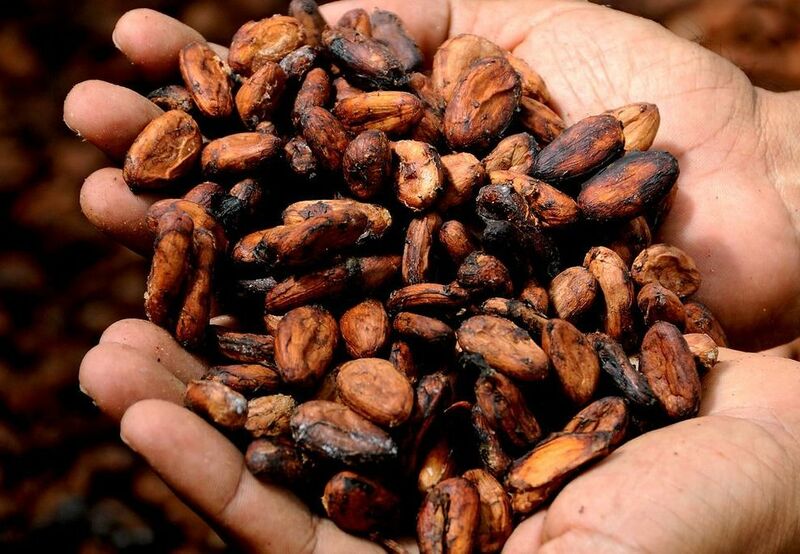
May ICE NY cocoa (CCK23) on Wednesday closed down -11 (-0.38%), and May ICE London cocoa #7 (CAK23) closed up +31 (+1.45%).
Cocoa prices Wednesday settled mixed, with London cocoa climbing to a 4-month nearest-futures high. A stronger dollar (DXY00) Wednesday weighed on NY cocoa prices, although a -0.3% decline in the British pound (^GBPUSD) supported London cocoa. A weaker pound benefits cocoa priced in sterling.
Last Friday, NY cocoa posted a 2-1/3 year nearest-futures high, and London cocoa Wednesday posted a 4-month high as smaller cocoa supplies from the Ivory Coast sparked fund buying and boosted prices. The Ivory Coast Agriculture Minister said last Friday that the Ivory Coast mid-crop, the smaller of the country's two annual harvests that began April 1, is expected to fall -25% y/y to 450,000 MT.
An increase in current U.S. cocoa inventories is bearish for NY cocoa prices. ICE-monitored cocoa inventories held in U.S. port warehouses on Wednesday rose to a 2-1/2 month high of 5,359,357 bags
An easing of cocoa crop quality concerns in West Africa is bearish for prices. Ivory Coast and Ghana cocoa farmers recently reported cocoa bean counts of 115 per 100 grams for this year’s mid-crop, above the average of 80 to 100 per 100 grams that cocoa exporters typically look for.
Smaller cocoa supplies from the Ivory Coast are bullish for prices. On Monday, Ivory Coast government data showed that farmers sent a cumulative 1.81 MMT of cocoa to Ivory Coast ports for the 2022/23 marketing year (October 1 through April 1), down -2.7% y/y. The Ivory Coast is the largest cocoa producer in the world.
The monthly report from the International Cocoa Organization (ICCO) on March 24 was also supportive for prices as the report said cocoa exports from the Ivory Coast fell -9.3% y/y to 530,314 MT between October and January, citing "the detrimental effects of cocoa-related diseases like the Cocoa Swollen Shoot Virus Disease."
Cocoa prices have support from projections last month from the ICCO that global 2022/23 cocoa stockpiles would fall -3.5% y/y to 1.653 MMT. In addition, ICCO said, "The expectation of a supply deficit has been compounded with weather variations, especially in West Africa." On the bearish side, the ICCO forecast 2022/23 global cocoa production would climb +4.1% y/y to 5.017 MMT, and global cocoa grindings would fall -0.6% y/y to 5.027 MMT.
Concern about the quality of some West African cocoa crops has limited any declines in cocoa prices. Cocoa farmers continue to struggle with the lack of fertilizer and pesticides as the war in Ukraine has limited Russian exports of potash and other fertilizers worldwide.
An increase in cocoa exports from Nigeria is bearish for prices after the Cocoa Association of Nigeria reported last Monday that Nigeria's Feb cocoa exports rose +15% y/y to 43,405 MT. Nigeria is the world's fifth-largest cocoa bean producer.
An increase in European cocoa supplies is negative for London cocoa prices after ICE monitored EU cocoa inventories on March 15 rose to a 6-1/4 month high of 139,060 MT.
Global cocoa demand is tepid and is a negative factor for cocoa prices. On January 19, the National Confectioners Association reported that Q4 North American cocoa grindings fell -8.1% y/y to 107,130 MT. Also, the European Cocoa Association reported on January 19 that European Q4 cocoa grindings fell -1.7% y/y to 359,577 MT. On January 18, the Cocoa Association of Asia reported that Asia Q4 cocoa grindings fell -0.2% y/y to 230,806 MT.
The quarterly report from the ICCO on December 1 was bullish for cocoa prices after ICCO said global 2021/22 cocoa production fell -8.0% y/y to 4.823 MMT as unfavorable weather and disease hampered cocoa yields. ICCO also revised its 2021/22 global cocoa production figure downward by -419,000 MT from September. ICCO also raised the 2021/22 global cocoa deficit to -306,000 MT from a Sep forecast of -230,000 MT. In 2020/21, global cocoa production rose to a record 5.242 MMT, and the global cocoa market was in a surplus of +209,000 MT.







